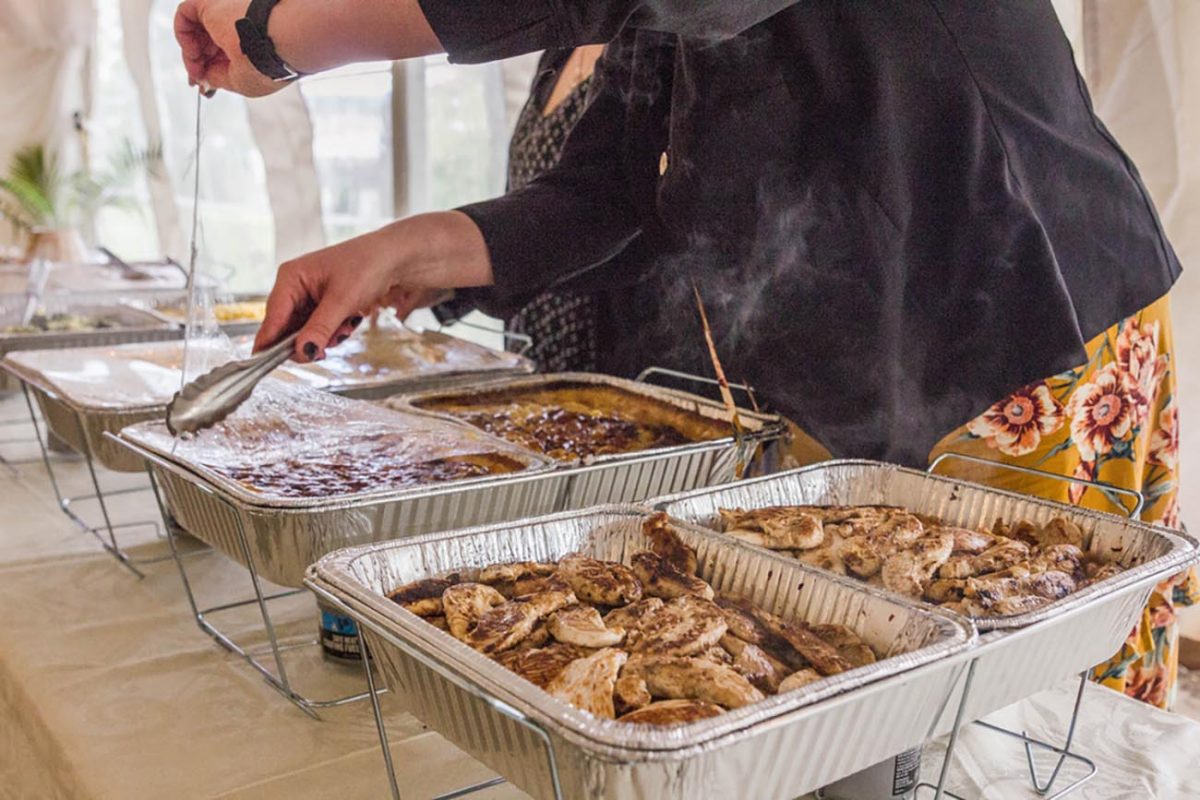

Tableware
How To Keep Serving Dishes Warm
Modified: January 4, 2024
Discover how to keep your tableware warm and your meals delicious with our helpful tips and tricks.
(Many of the links in this article redirect to a specific reviewed product. Your purchase of these products through affiliate links helps to generate commission for Storables.com, at no extra cost. Learn more)
Introduction
When it comes to hosting parties or family gatherings, serving delicious hot meals is a top priority. However, keeping those dishes warm throughout the event can be quite a challenge. No one wants to serve lukewarm food that has lost its flavor and appeal. That’s where the importance of using the right serving dishes and techniques comes into play.
In this article, we will explore various methods and tips on how to keep serving dishes warm, ensuring that your guests can enjoy their meals at the perfect temperature. From preheating your serving dishes to utilizing warming trays and chafing dishes, we have you covered.
So, let’s dive in and discover the secrets to keeping your dishes warm and delightful until the very last bite.
Key Takeaways:
- Choose the right serving dishes made of materials like ceramic, porcelain, or stoneware to retain heat and keep your dishes warm for longer, ensuring a delightful dining experience for your guests.
- Utilize warming trays, chafing dishes, or buffet servers to maintain the perfect temperature of your dishes, providing a convenient and elegant solution for serving warm and flavorful meals at your gatherings.
Read more: What Are Serving Dishes?
Choosing the Right Serving Dishes
When it comes to keeping your dishes warm, the choice of serving dishes plays a crucial role. Here are some factors to consider when selecting the right serving dishes:
- Material: Opt for serving dishes made of materials that retain heat well, such as ceramic, porcelain, or stoneware. These materials have excellent heat retention capabilities, helping to keep your dishes warm for longer periods.
- Size and Shape: Consider the size and shape of the serving dishes in relation to the amount of food you’ll be serving. It’s important to choose dishes that are large enough to accommodate the food while leaving some space for heat to circulate and keep the food warm.
- Lid or Cover: Look for serving dishes with lids or covers. This helps to trap heat and prevent it from escaping, ensuring that your dishes stay hot for a longer time.
- Insulated Dishes: Another option is to invest in insulated serving dishes. These are designed with double walls that help to retain heat. The insulation not only keeps the food warm but also protects your hands from the hot dish.
- Ease of Use and Cleaning: Consider the practicality of using and cleaning the serving dishes. Opt for options that are easy to handle, serve, and clean, making your hosting experience stress-free.
By choosing the right serving dishes, you can improve the heat retention and ensure that your dishes stay warm and inviting throughout your gathering.
Preheating Your Serving Dishes
Preheating your serving dishes is a simple yet effective way to keep your meals warm for an extended period. Here’s how you can preheat your serving dishes:
- Warm Water Bath: Fill your sink or a large container with hot water. Place your serving dishes in the water and let them sit for a few minutes. This will warm up the dishes, helping to retain the heat of the food when it is placed in them.
- Heat from the Oven: If you’re using oven-safe serving dishes, you can preheat them directly in the oven. Place the dishes in the oven while it’s preheating, and allow them to warm up alongside the oven.
- Warm Plates: For dishes that require individual plating, consider warming the plates before serving. Stack the plates in the oven on low heat or use a plate warmer specifically designed for this purpose.
Preheating your serving dishes ensures that the food is transferred onto warm surfaces, helping to maintain its temperature and preventing rapid cooling. This small step can make a big difference in keeping your dishes warm and appetizing, especially when serving meals with multiple courses.
Using Insulated Serving Dishes
Insulated serving dishes are a fantastic option for keeping your meals warm, especially when it comes to serving dishes that require extended periods on the table. Here’s how you can make the most of insulated serving dishes:
1. Choose Insulated Dishes: Look for serving dishes that are specifically designed as insulated. These dishes are typically made with double walls that create a layer of insulation, helping to retain heat and keep your food warm for longer.
2. Preheat the Insulated Dishes: Before transferring the food to the insulated serving dishes, preheat them by filling them with hot water and letting them sit for a few minutes. This will warm up the dishes, promoting better heat retention when the food is placed in them.
3. Transfer the Food Promptly: Once your food is ready to be served, transfer it to the insulated dishes swiftly. This ensures that the dish retains maximum heat from the food and prevents any rapid cooling that may occur when food is exposed to cool air.
4. Keep the Lid On: Insulated serving dishes often come with lids or covers. It’s important to keep the lids on whenever possible. The cover helps to trap heat inside, maintaining the warmth of the food even as guests serve themselves.
5. Use Warm Water Baths: If you notice that the temperature of the food in the insulated dish is dropping, you can place the dish in a warm water bath for a few minutes. This will help to reheat the dish and restore the temperature of the food.
6. Monitor and Replenish: Keep an eye on the temperature of the food in the insulated dishes throughout your gathering. If necessary, replenish the dishes with fresh, hot portions to ensure that your guests can enjoy warm and delicious meals until the end.
7. Handle with Care: Keep in mind that insulated serving dishes retain heat exceptionally well. Use caution when handling them and remind your guests to be mindful of the hot surfaces to prevent any accidents or burns.
Using insulated serving dishes can significantly prolong the warmth of your food, allowing you to serve delectable meals without worrying about rapid temperature loss. Invest in a set of high-quality insulated dishes, and you’ll be well-equipped to keep your meals warm and satisfying throughout your gathering.
Utilizing Warming Trays
Warming trays are a convenient and efficient way to keep your dishes warm during a gathering. These electric trays provide a consistent source of low heat, ensuring that your food stays warm without overcooking. Here’s how you can make the most of warming trays:
- Select the Right Size: Choose a warming tray that is large enough to accommodate the dishes you’ll be serving. Consider the number of guests and the amount of food you’ll have to keep warm.
- Preheat the Warming Tray: Turn on the warming tray and allow it to preheat for a few minutes before placing the dishes on top. This ensures that the trays are ready to provide a steady source of heat.
- Arrange the Dishes: Place the serving dishes directly onto the warming tray. Make sure to spread them out evenly, creating space for the heat to circulate around each dish.
- Monitor the Temperature: Most warming trays come with temperature control settings. Adjust the temperature to maintain a gentle heat that keeps the food warm without drying it out. Refer to the manufacturer’s instructions for specific temperature guidelines.
- Rotate and Stir: To ensure even heating, it’s a good idea to rotate the dishes periodically and stir the food. This helps to distribute the heat evenly and prevents any cold spots from forming in the dishes.
- Add Moisture: If you notice that the food is drying out, place a dish of water on the warming tray. This will add moisture to the environment, preventing the food from becoming dry or sticky.
- Keep Covered: If the serving dishes have lids or covers, use them to seal in the heat. The cover helps to retain moisture and warmth, ensuring that the food stays delicious and appetizing.
- Use as a Buffet Setup: Consider setting up a buffet-style serving area with multiple warming trays. This allows guests to have easy access to warm food and helps to maintain the overall temperature of the dishes.
Warming trays provide a convenient and effective solution for keeping your dishes warm throughout your gathering. By following these tips, you can ensure that your guests enjoy hot and flavorful meals throughout the event, enhancing their dining experience.
Read more: Where To Store Serving Dishes
Wrapping Dishes with Towels or Foil
Wrapping your serving dishes with towels or foil is a simple yet effective method to help retain the warmth of your food. Here’s how you can use this technique:
- Gather Insulating Materials: Before transferring your cooked food to the serving dishes, have towels or aluminum foil ready.
- Preheat the Serving Dishes: If possible, preheat your serving dishes using the methods mentioned earlier. This will help to ensure that the dishes are already warm before wrapping them.
- Transfer the Food: Once your dishes are warm, carefully transfer the cooked food into the serving dishes.
- Wrap with Towels: Take clean towels or kitchen towels and wrap them around the serving dishes. Make sure to cover the sides and top of the dish securely. This will provide additional insulation to help keep the food warm.
- Wrap with Foil: Alternatively, you can use aluminum foil to wrap the serving dishes. Make sure to tightly seal the foil around the dish to prevent heat loss.
- Keep Covered: Once the serving dishes are wrapped, place the lids or covers back on top. This helps to trap the heat and ensure that the food stays warm for a longer duration.
- Monitor and Adjust: Throughout your gathering, periodically check the temperature of the food and adjust the wrapping if necessary. Be cautious when unwrapping the dishes, as they may be hot.
By wrapping your serving dishes with towels or foil, you create a layer of insulation that helps to retain the heat, ensuring that your food stays warm and delicious. This method is particularly useful when you need to transport hot dishes or serve them in areas where heating options are limited.
Use a double boiler or chafing dish to keep serving dishes warm. The gentle heat will maintain the temperature of the food without overcooking it.
Keeping Dishes Warm in the Oven
The oven can be a reliable tool for keeping your dishes warm until you’re ready to serve. Here’s how you can use your oven to maintain the temperature of your food:
- Preheat the Oven: Start by preheating your oven to a low temperature, typically around 200°F (93°C).
- Choose Oven-Safe Dishes: Ensure that the dishes you’ll be using are oven-safe. Using dishes that are not designed for oven use can result in breakage or damage.
- Transfer the Food: Place the cooked food in oven-safe serving dishes. If the dishes are not already warm, you can preheat them in the oven for a few minutes before transferring the food.
- Cover the Dishes: To trap the heat and prevent the food from drying out, cover the serving dishes with aluminum foil or oven-safe lids.
- Warm Individual Plates: If you’ll be serving individual portions, consider placing plates in the oven for a few minutes to warm them up. This helps to keep the food at a consistent temperature when it is plated.
- Keep an Eye on the Time: While the oven can effectively keep your dishes warm, be mindful of the time. You don’t want to leave your dishes in the oven for too long, as they may become overcooked or dry out.
- Rotate and Stir: To ensure even heating, rotate the dishes periodically and give them a gentle stir. This helps to distribute the heat and keeps the food at a uniform temperature.
- Remove from the Oven at the Right Moment: When you’re ready to serve the food, remove the dishes from the oven and carefully uncover them. Be cautious as the dishes and the food inside may be hot.
Remember, while the oven can be a great option for keeping your dishes warm, it’s important to monitor the temperature and timing to prevent overcooking or drying out the food. With a little attention, your oven can be a valuable tool for maintaining the perfect temperature until it’s time to delight your guests with a warm and delicious meal.
Using Chafing Dishes or Buffet Servers
Chafing dishes and buffet servers are specifically designed to keep food warm during events and gatherings. These handy appliances help maintain the temperature of your dishes while providing a visually appealing presentation. Here’s how to make the most of chafing dishes or buffet servers:
- Set Up the Chafing Dishes or Buffet Servers: Assemble the chafing dishes or buffet servers according to the manufacturer’s instructions. Make sure all the components are securely in place.
- Choose the Right Size and Shape: Select chafing dishes or buffet servers that are suitable for the dishes you’ll be serving. Consider the number of guests and the amount of food you need to keep warm.
- Add Water to the Water Pan: Most chafing dishes or buffet servers have a water pan at the bottom. Fill this pan with hot water before placing the serving dishes on top. The water helps to create a gentle steam that maintains the temperature of the food.
- Light the Fuel Source: If your chafing dish or buffet server requires a fuel source, such as a sterno can or electric heating element, light it according to the instructions provided. This will provide a consistent and controlled source of heat.
- Transfer the Food to the Serving Dishes: Place your preheated serving dishes onto the chafing dish or buffet server. Ensure that all the dishes fit securely and are arranged for easy access by your guests.
- Keep the Dishes Covered: Once your dishes are in place, cover them with the provided lids or domes. This helps to trap the heat and maintain the temperature of the food.
- Monitor and Adjust: Throughout your gathering, periodically check the water level in the chafing dishes or buffet servers and replenish it as needed. Also, keep an eye on the temperature of the food to ensure it stays warm.
- Rotate and Stir: To prevent any cold spots, rotate the serving dishes and give them a gentle stir from time to time. This helps to distribute the heat evenly and keep the food at a consistent temperature.
- Use Heat-Resistant Utensils: When serving the food from the chafing dishes or buffet servers, use heat-resistant utensils to prevent any burns or accidents.
Chafing dishes and buffet servers are excellent tools for keeping your dishes warm and ready to be enjoyed. They not only serve a functional purpose but also add an elegant touch to your presentation. With careful monitoring and proper setup, you can ensure that your guests are treated to a delectable and warm dining experience.
Using Hot Water Baths
Hot water baths are a simple and effective method to keep your dishes warm, especially for items that are served in bowls or pans. This technique utilizes the gentle heat from hot water to maintain the temperature of your food. Here’s how you can use hot water baths:
- Choose a Deep Pan: Select a deep pan or container that is large enough to hold the serving dish you want to keep warm. Ensure that the pan is heat-resistant and can withstand hot water.
- Preheat the Serving Dish: Before placing the dish in the hot water bath, preheat it using one of the methods mentioned earlier. This helps the dish to retain heat for a longer period.
- Fill the Pan with Hot Water: Fill the pan with hot water, ensuring it’s deep enough to reach halfway up the sides of the serving dish. The water should be hot, but not boiling.
- Place the Serving Dish in the Water Bath: Carefully place the preheated serving dish into the hot water bath, making sure it’s stable and secure.
- Monitor the Water Temperature: Keep an eye on the water temperature, as it may start to cool over time. If needed, you can replace the water with freshly heated water to maintain the desired temperature.
- Wrap the Pan with Towels or Foil: To further insulate the serving dish and retain heat, wrap the entire pan with clean towels or aluminum foil. This will help to minimize heat loss and keep the food warm.
- Keep Covered: If the serving dish has a lid or cover, place it on top to trap the heat. This helps to create a sealed environment that maintains the temperature of the food.
- Stir and Rotate: To distribute the heat evenly, periodically stir the food in the serving dish and rotate the dish within the hot water bath. This prevents any cold spots and ensures that the entire dish remains warm.
- Handle with Care: When removing the serving dish from the hot water bath, use oven mitts or dish towels to protect your hands from the hot water. Be cautious as the dish and the water may be hot.
Using a hot water bath is a reliable and straightforward method to keep your dishes warm. It’s particularly useful for items that are served in bowls or pans, such as soups, sauces, or casseroles. By following these steps, you can ensure that your food stays at an ideal temperature, providing a satisfying dining experience for your guests.
Read more: How To Clean Aluminum Serving Dishes
Adding Heat Sources to Your Serving Area
If you want to keep your entire serving area warm, adding additional heat sources can be an effective solution. By strategically placing heat sources in the vicinity of your dishes, you can help maintain the temperature of your food. Here are some ways to add heat sources to your serving area:
- Electric Warming Trays: Utilize electric warming trays specifically designed for keeping food warm. These compact and portable trays can be placed on your serving table and provide a consistent source of low heat.
- Hot Plates: Use hot plates or warming plates that are designed to keep dishes warm. These plates provide a heated surface for your serving dishes, ensuring that your food stays at an optimal temperature.
- Chafing Dish Fuel: Set up chafing dishes or buffet servers with fuel sources, such as sterno cans. These fuel sources generate heat, allowing you to keep multiple dishes warm simultaneously.
- Electric Food Warmers: Consider using electric food warmers, which are designed to keep food at a consistent and controlled temperature. These warmers usually have multiple compartments, allowing you to keep different dishes warm at once.
- Portable Heating Lamps: Place portable heating lamps strategically around your serving area. These lamps emit radiant heat, creating a warm atmosphere and helping to maintain the temperature of your food.
- Warming Drawers: If you have a large gathering or a dedicated space for serving, consider investing in warming drawers. These drawers are designed to keep food warm with adjustable temperature settings.
- Electric Heat Trays: Electric heat trays are another option for keeping your dishes warm. These trays have built-in electric heating elements that evenly distribute heat, ensuring that your food remains hot.
Adding heat sources to your serving area allows you to create a warm and inviting environment for your guests while ensuring that your food stays at the desired temperature. Be sure to monitor the heat sources to prevent overheating or drying out of the dishes. With these additional heat sources, your guests can enjoy a satisfying and delicious experience from the first to the last bite.
Conclusion
Keeping your serving dishes warm is essential for serving delicious and satisfying meals to your guests. Whether you’re hosting a party, a family gathering, or a special occasion, implementing the right techniques can ensure that your food stays at the perfect temperature throughout the event.
From choosing the right serving dishes to utilizing various methods such as preheating, using insulated dishes, wrapping with towels or foil, and utilizing chafing dishes or buffet servers, you have a range of options to keep your dishes warm. Each method has its own advantages and can be tailored to suit your specific needs.
Remember to monitor the temperature of the food, rotate or stir the dishes when necessary, and use caution when handling hot items. Whether you’re using an oven, hot water baths, or adding heat sources to your serving area, maintaining the temperature of your dishes ensures that your guests can enjoy meals that are flavorful, appealing, and comforting.
By implementing these techniques, you can create a memorable dining experience where your guests can savor every bite without sacrificing the warmth and taste of your meticulously prepared dishes.
So, the next time you’re hosting a gathering, don’t let cold dishes ruin the experience. Keep your serving dishes warm, and delight your guests with food that is as warm and inviting as your hospitality.
Frequently Asked Questions about How To Keep Serving Dishes Warm
Was this page helpful?
At Storables.com, we guarantee accurate and reliable information. Our content, validated by Expert Board Contributors, is crafted following stringent Editorial Policies. We're committed to providing you with well-researched, expert-backed insights for all your informational needs.
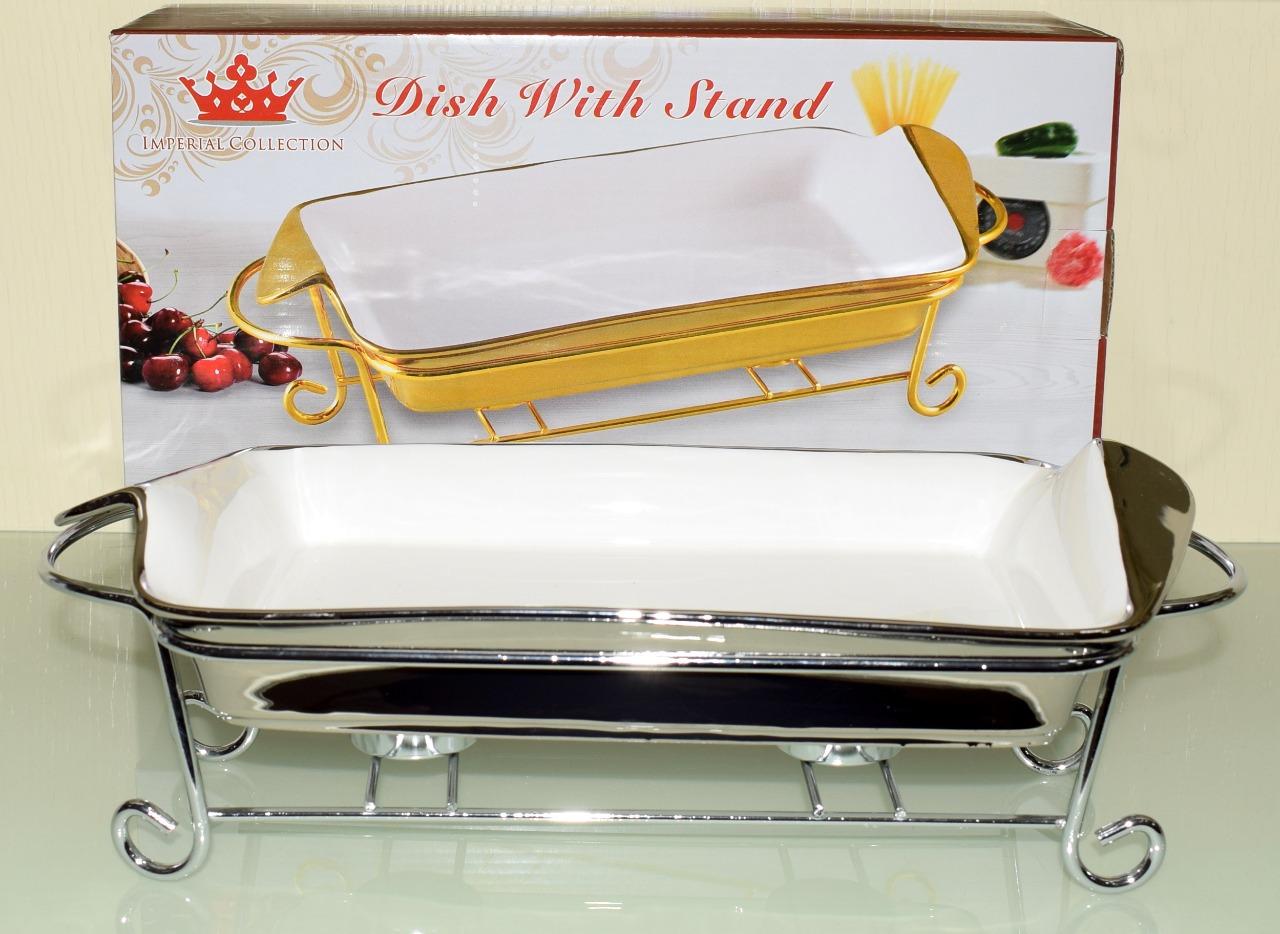
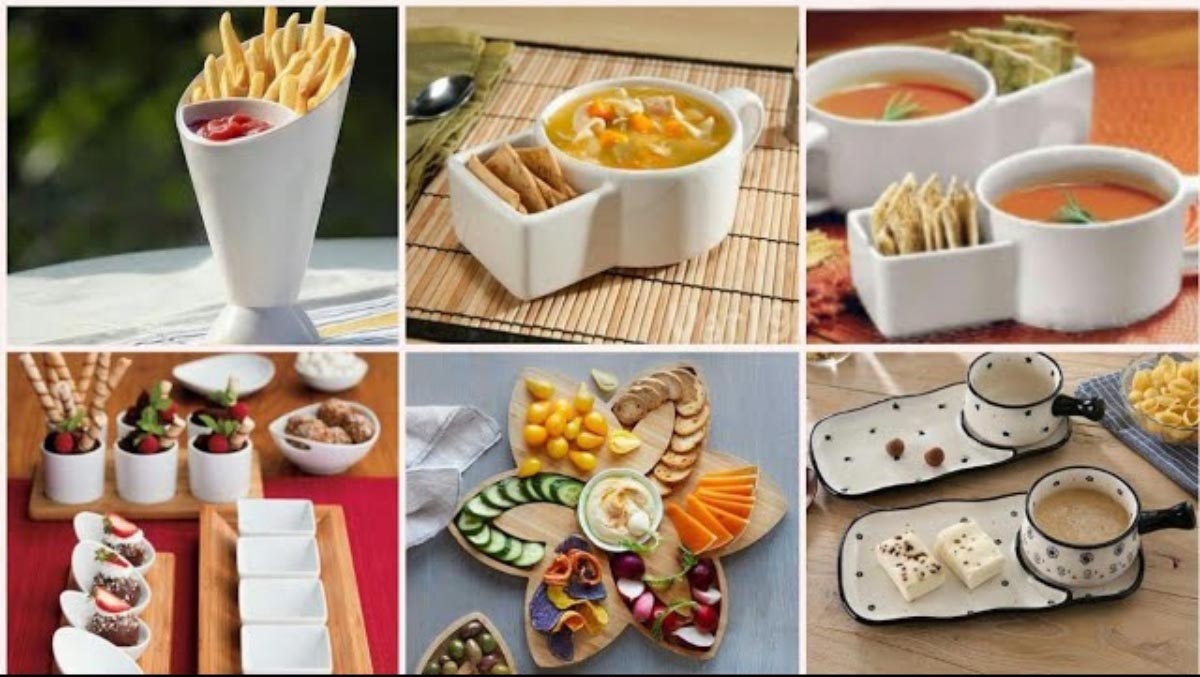
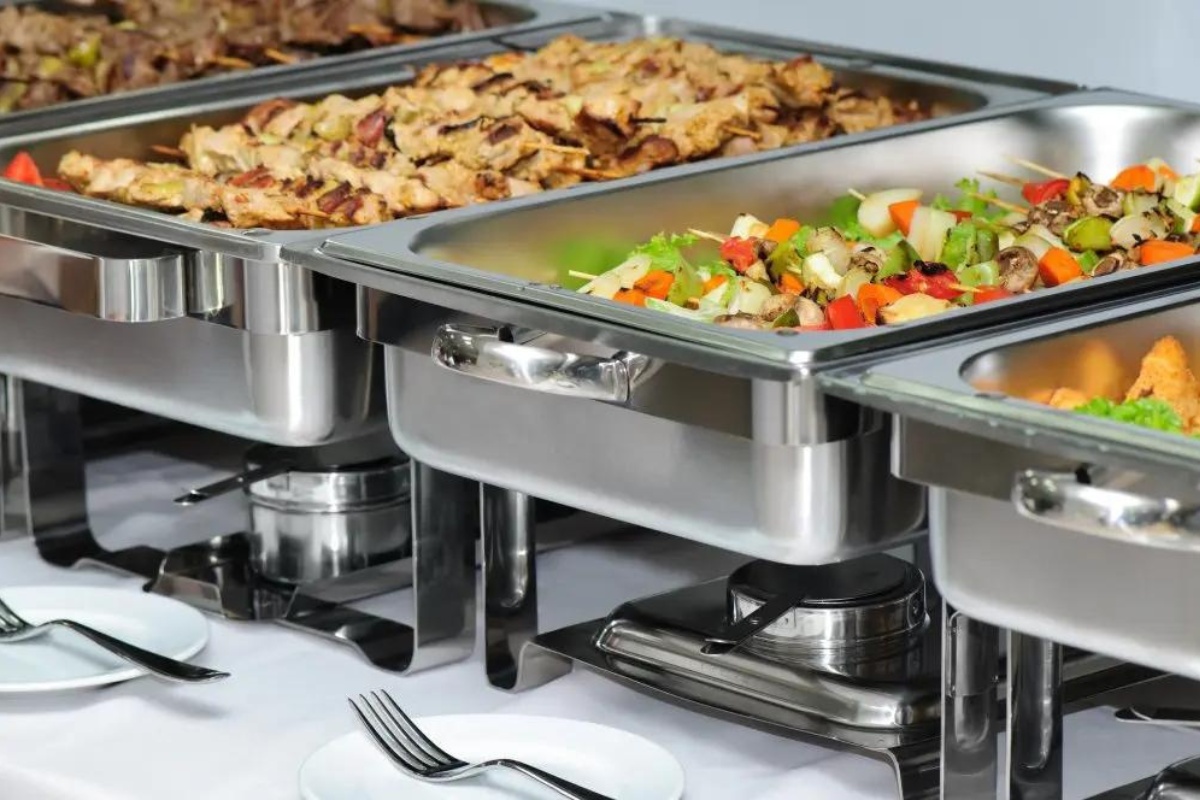

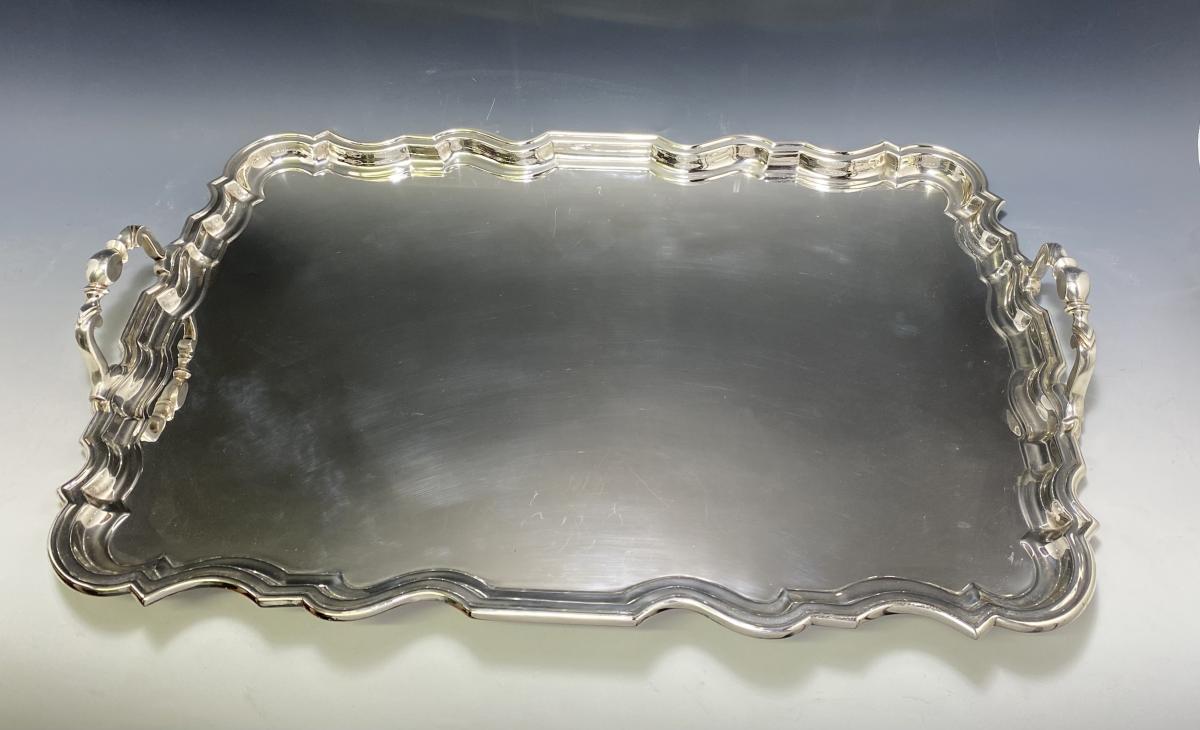
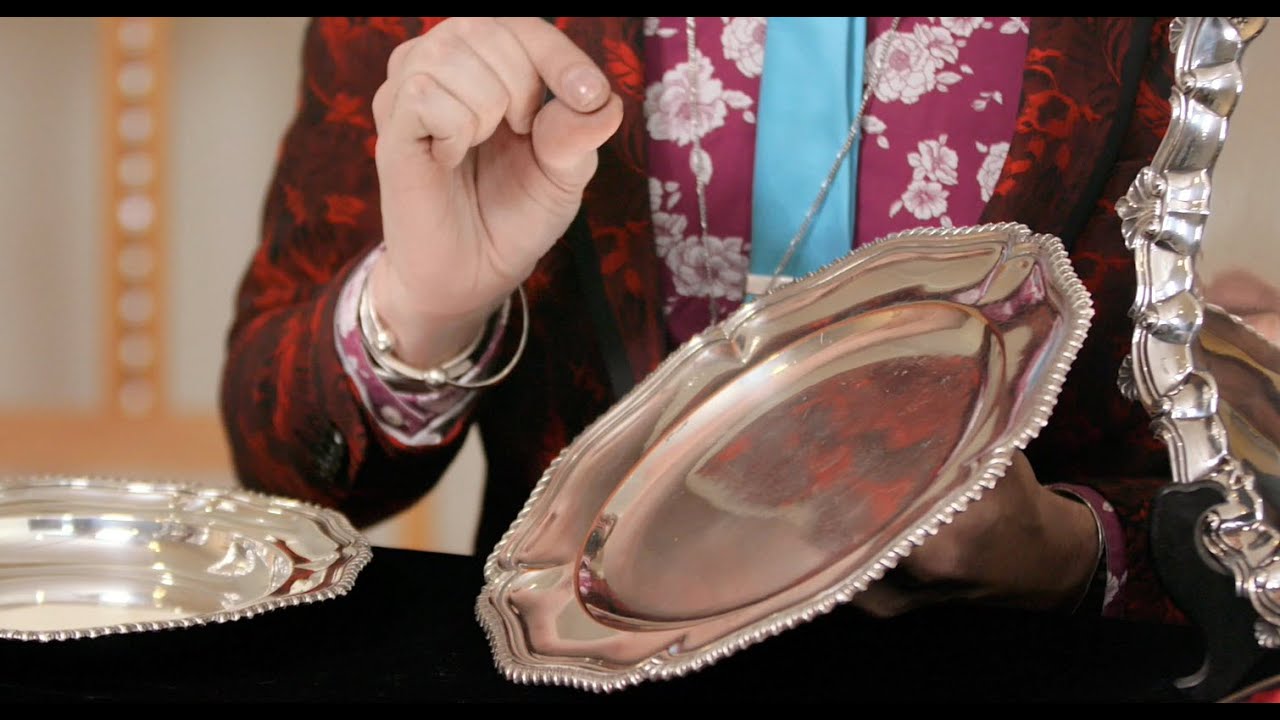
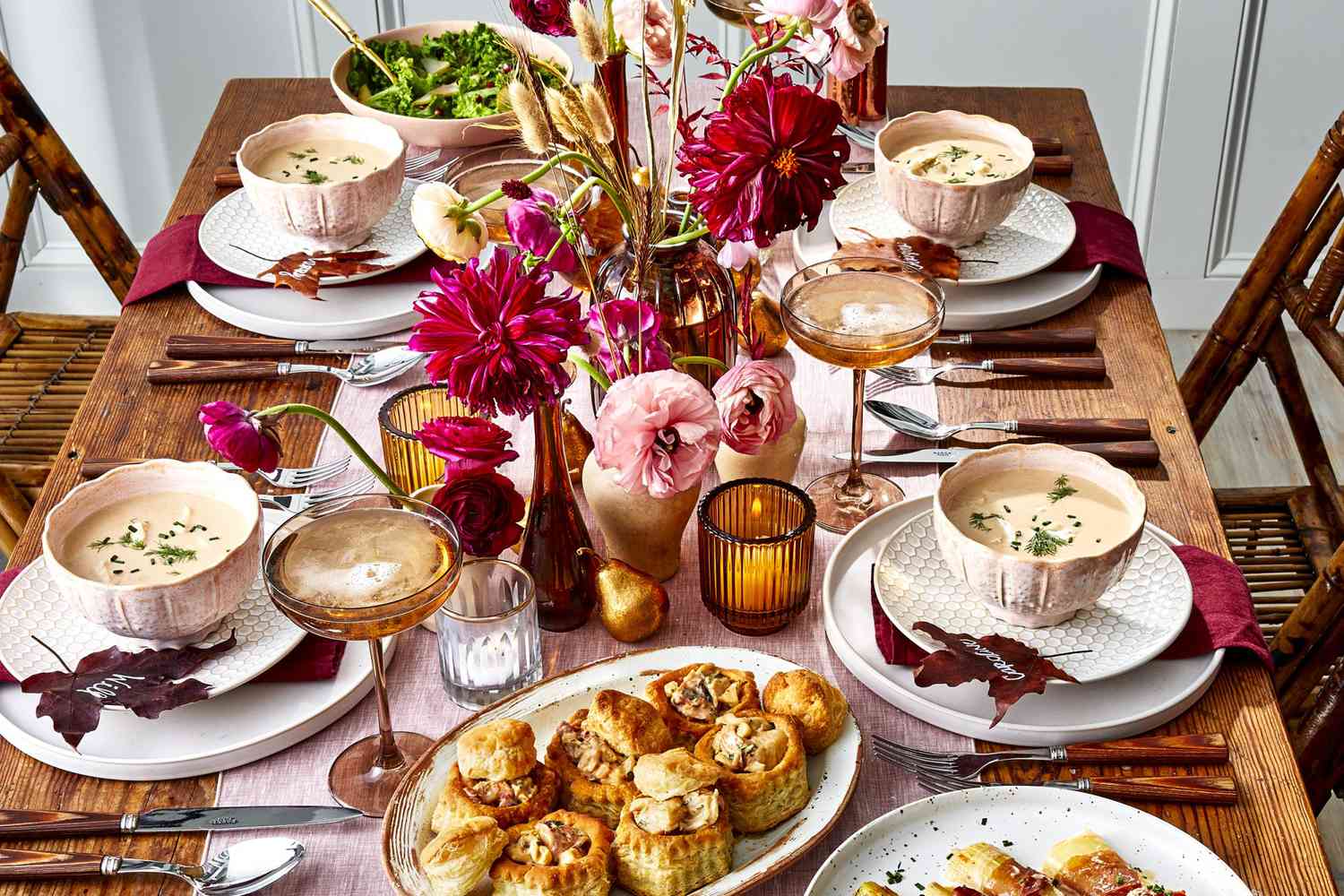
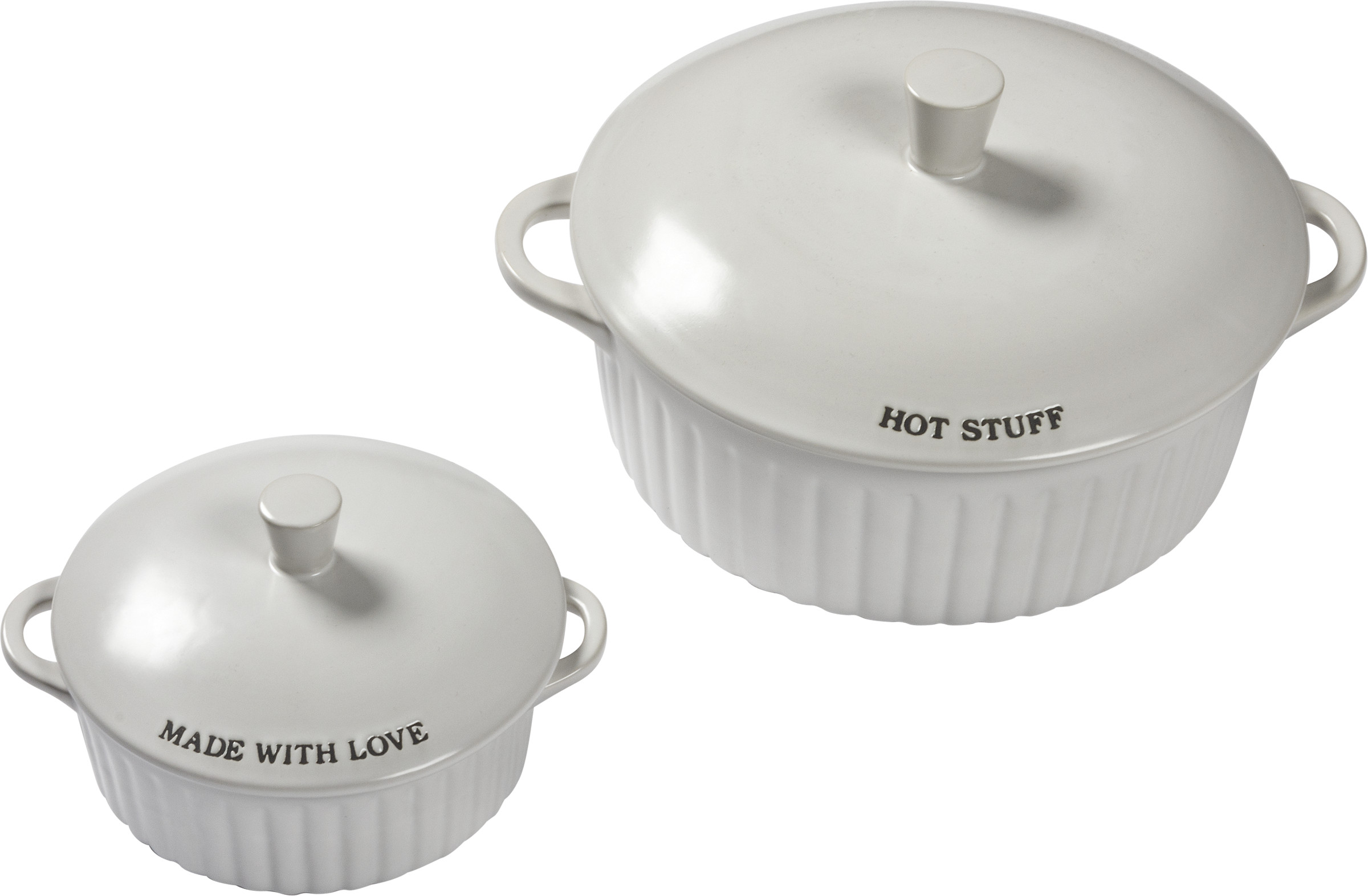

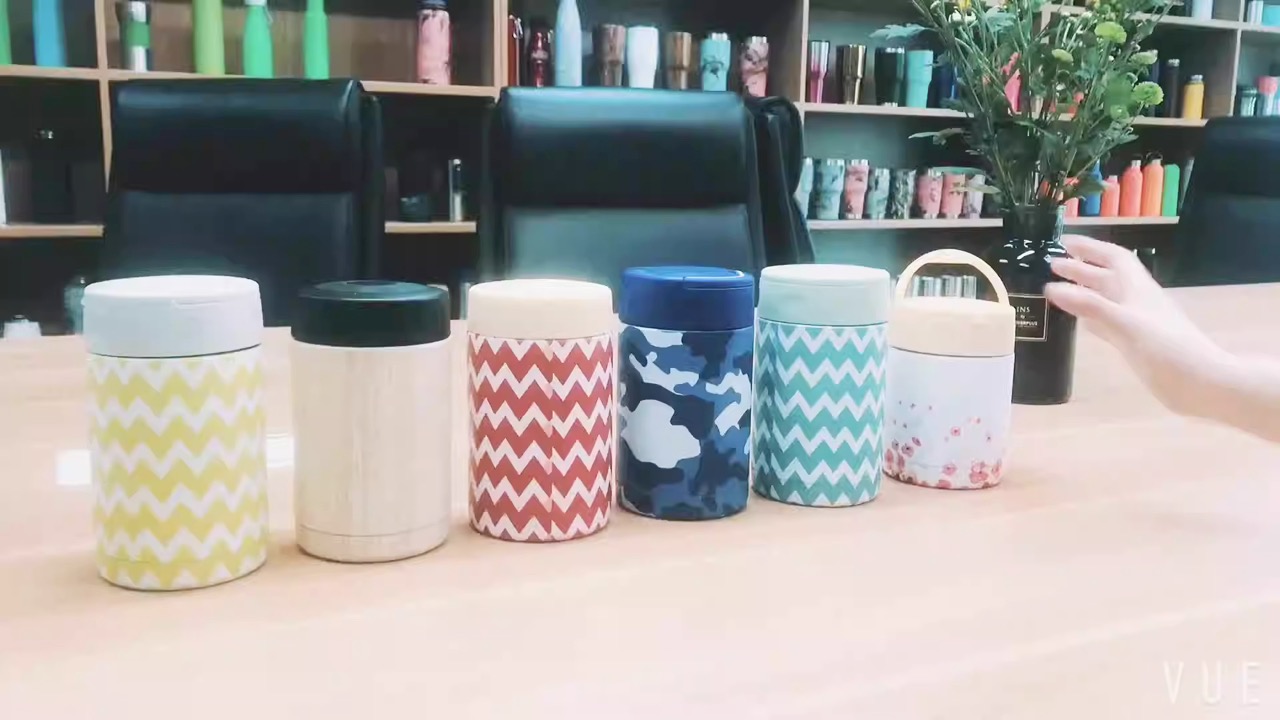

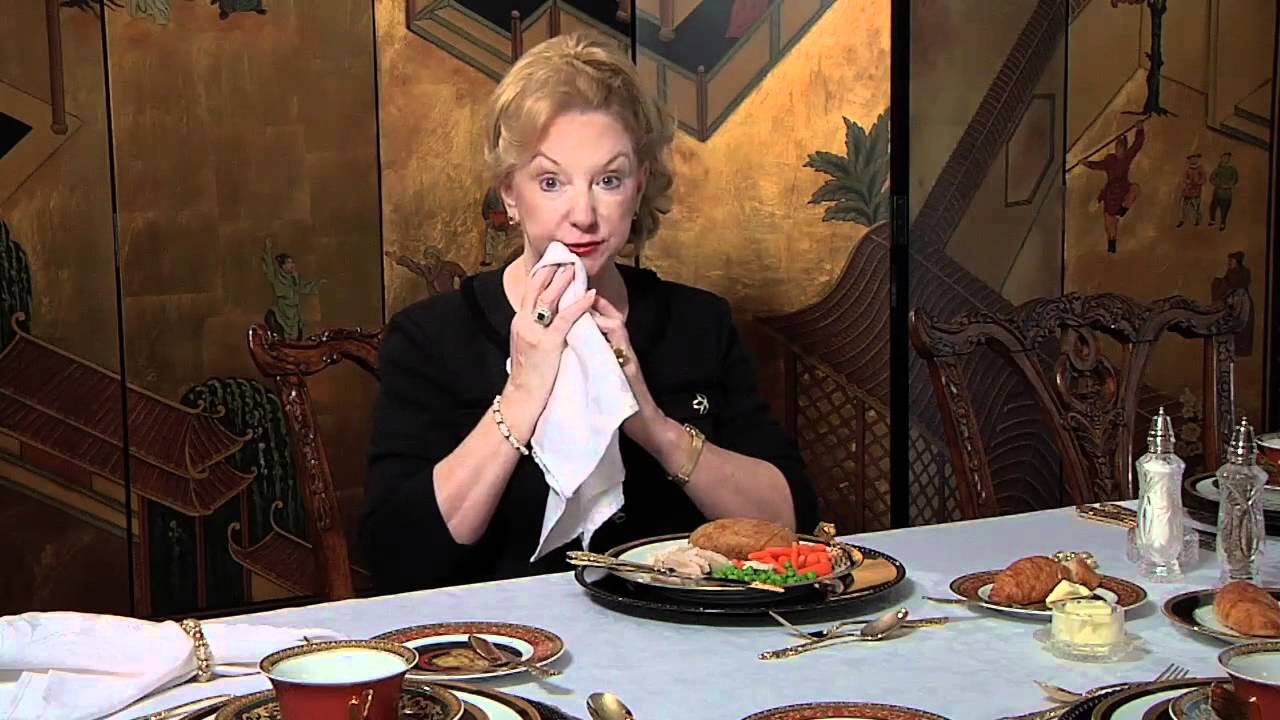
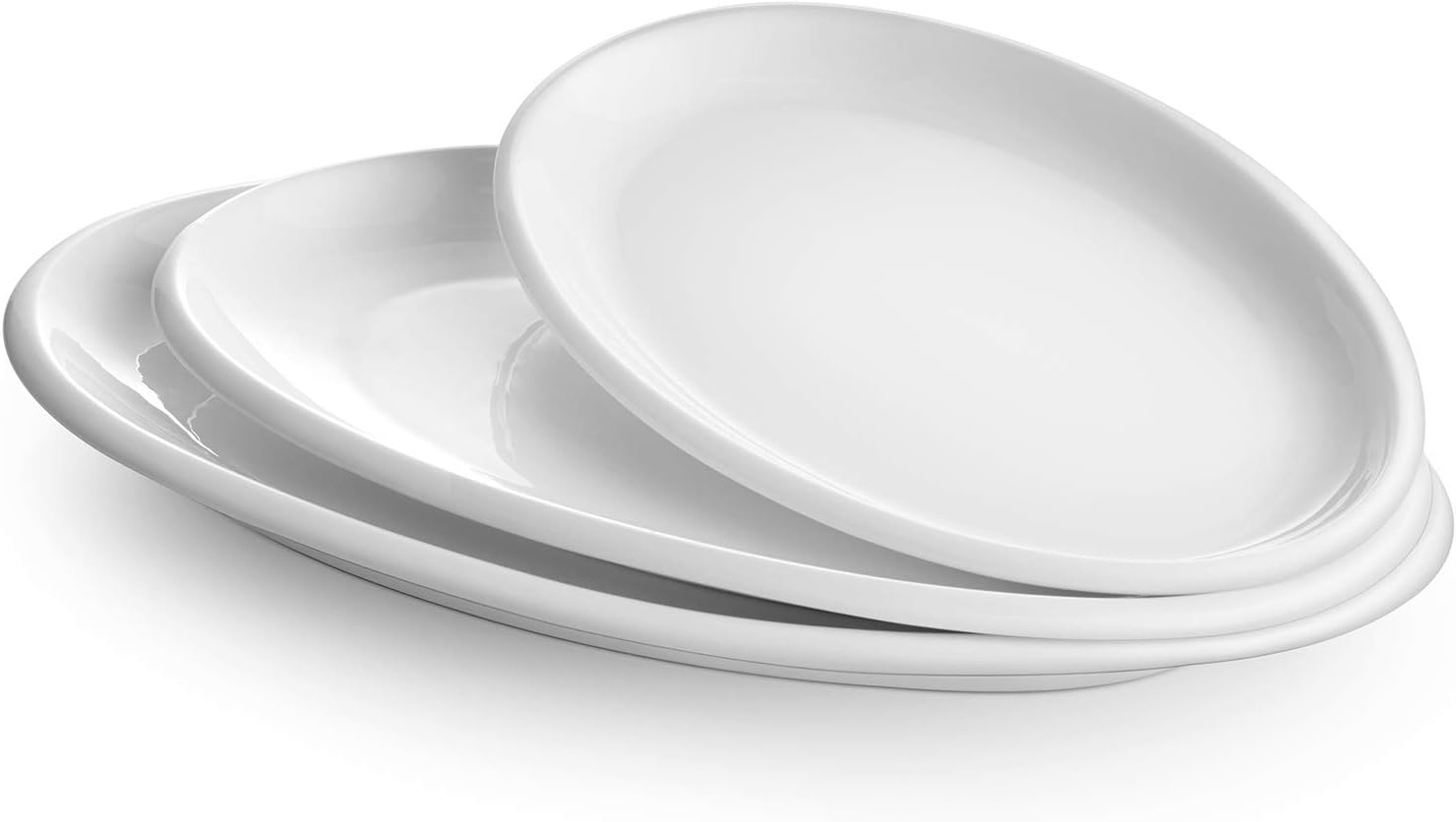

0 thoughts on “How To Keep Serving Dishes Warm”